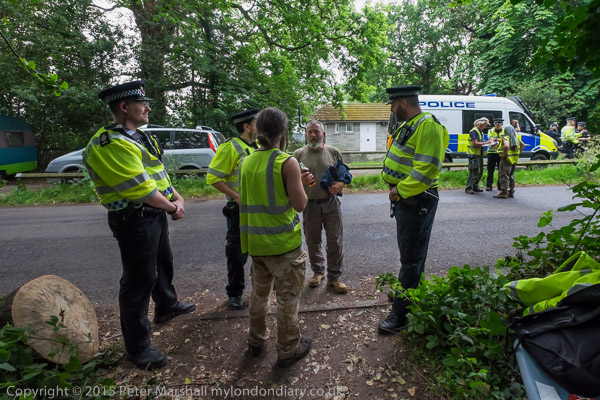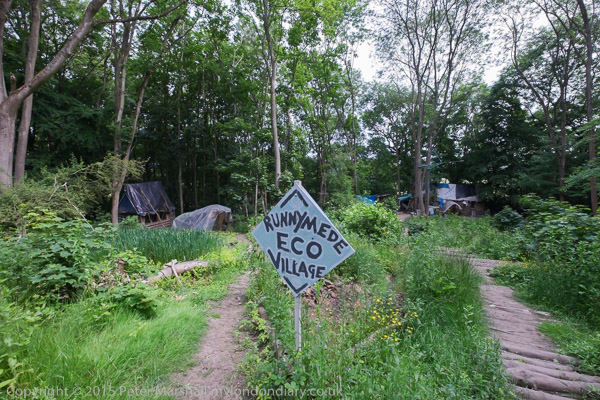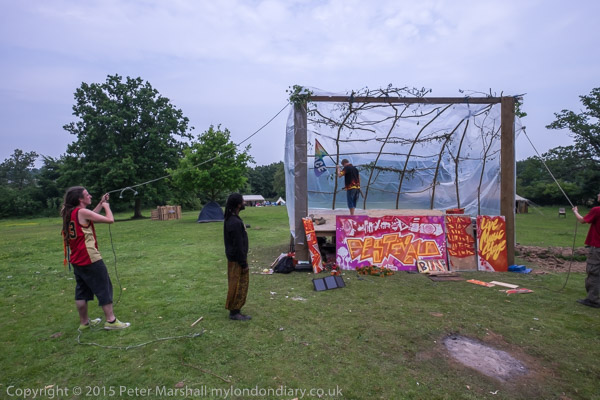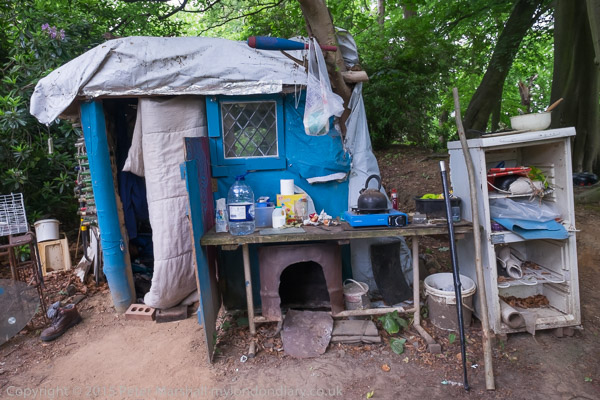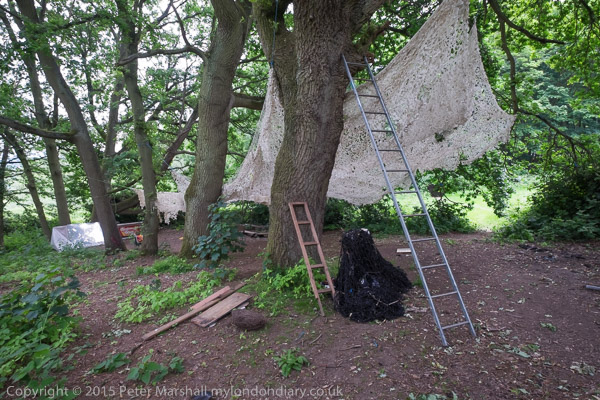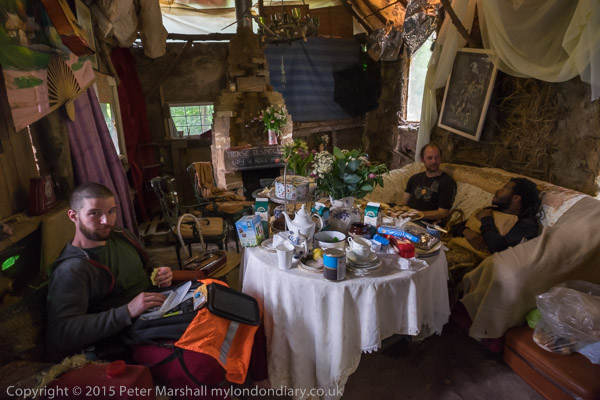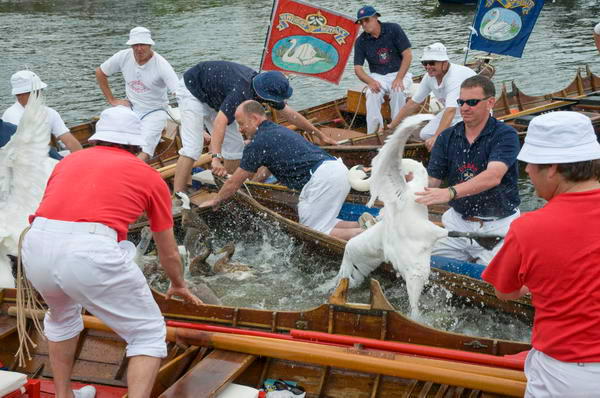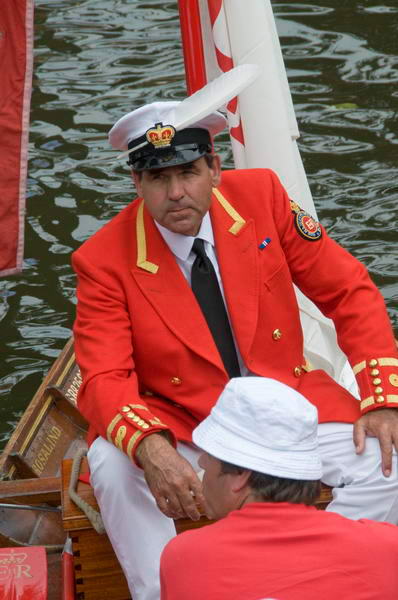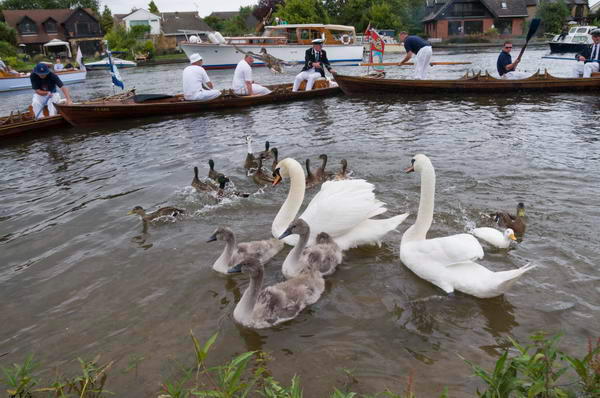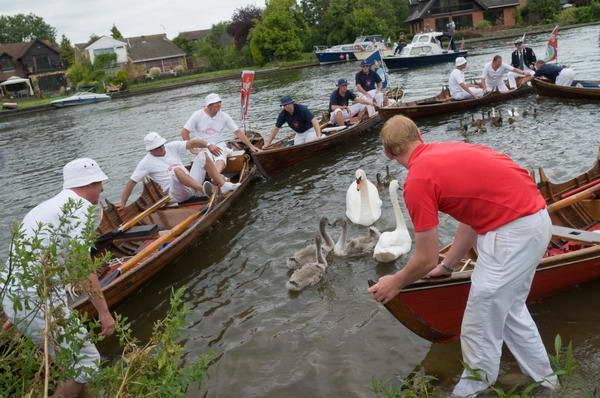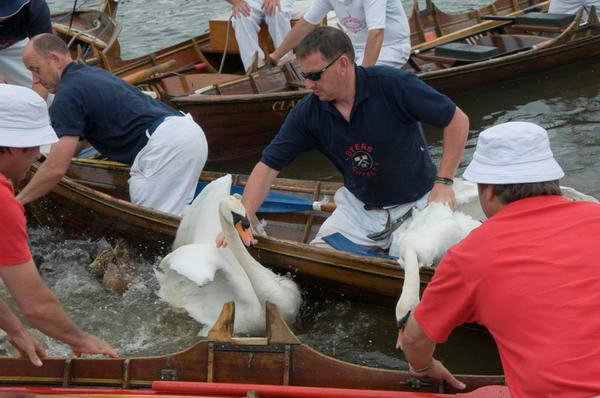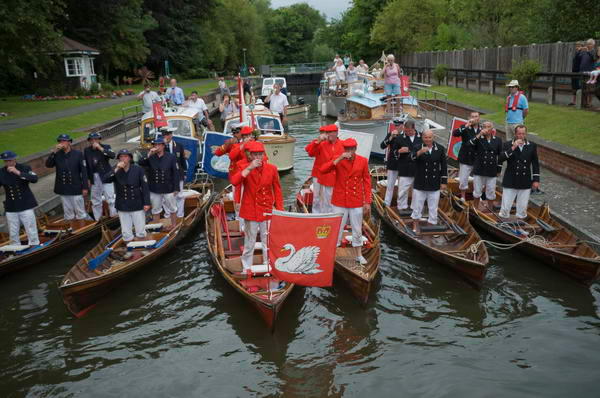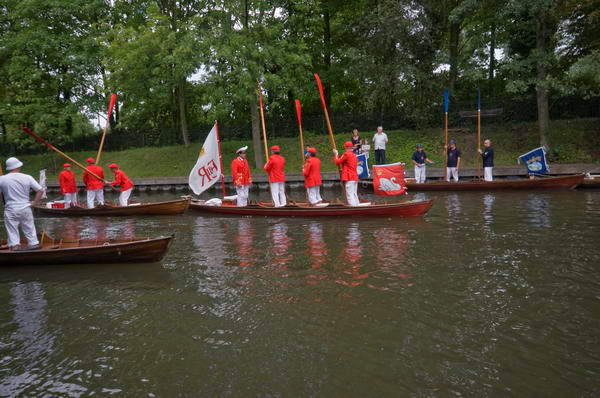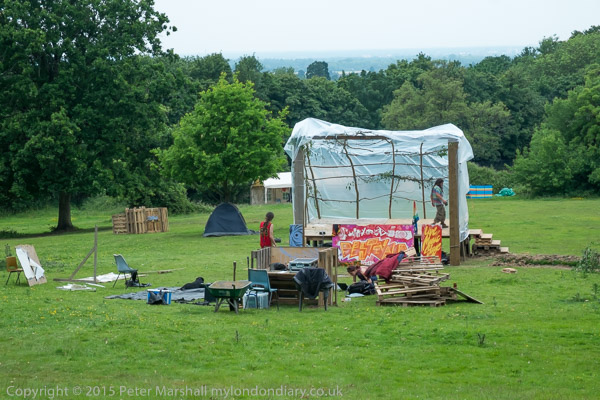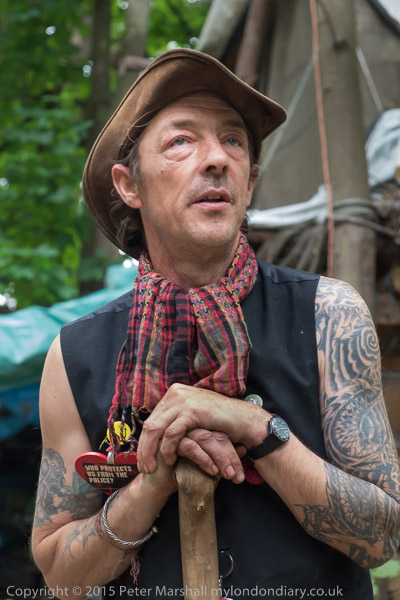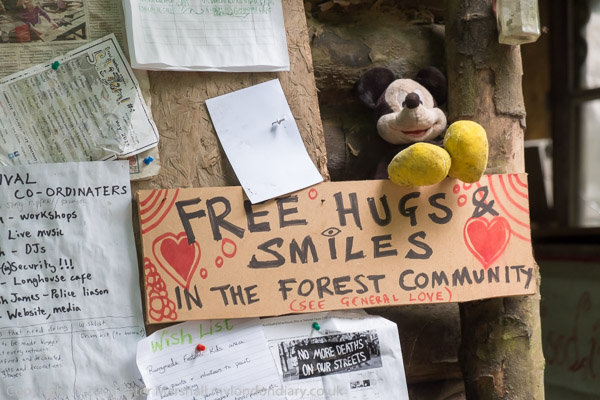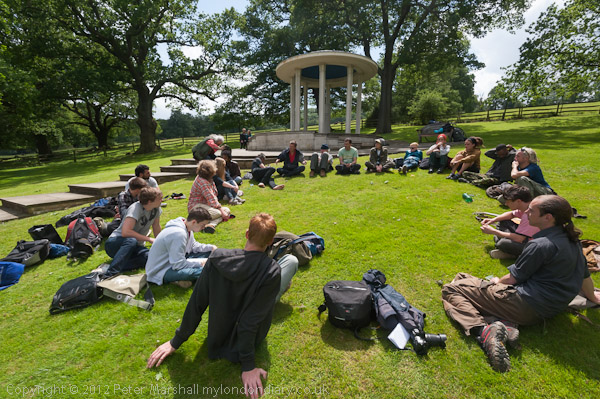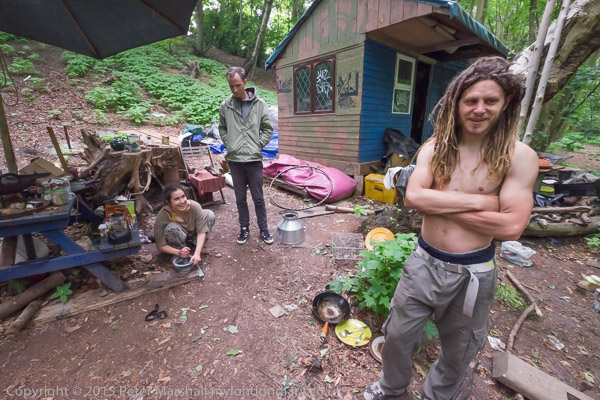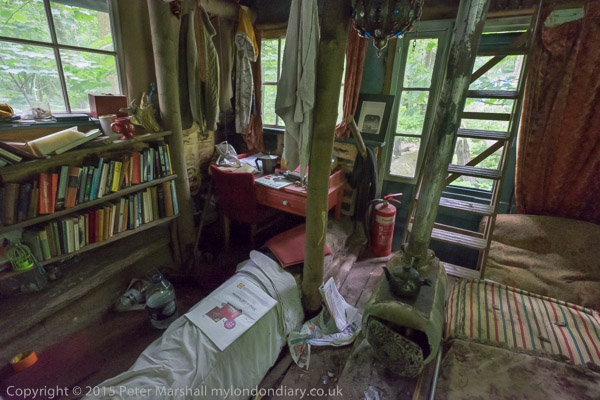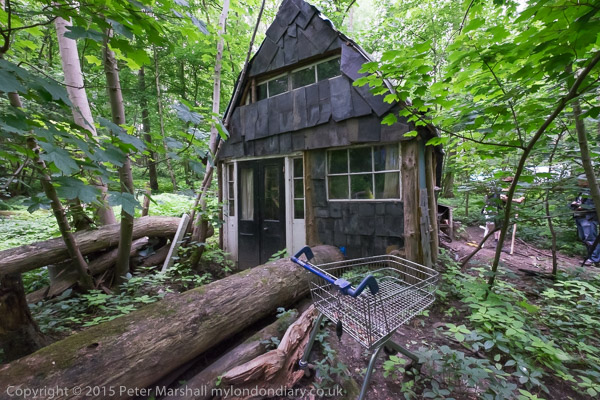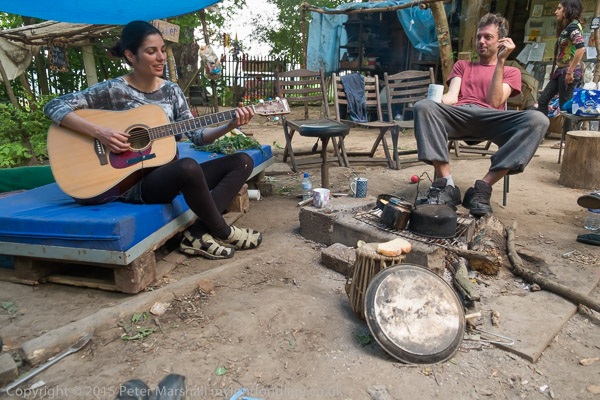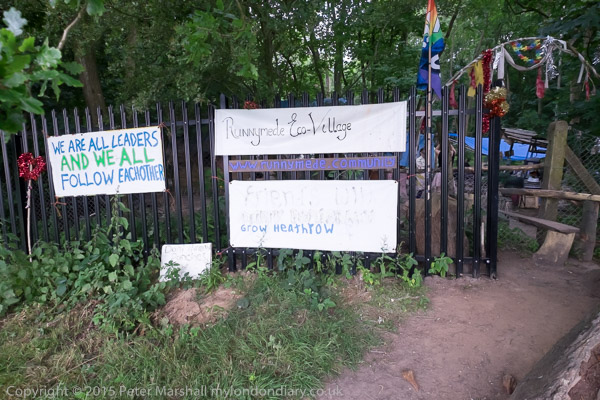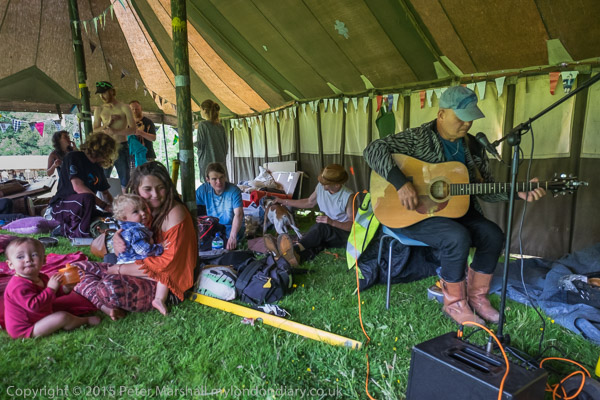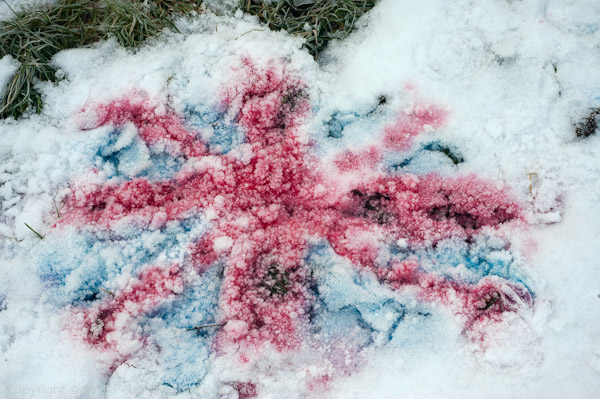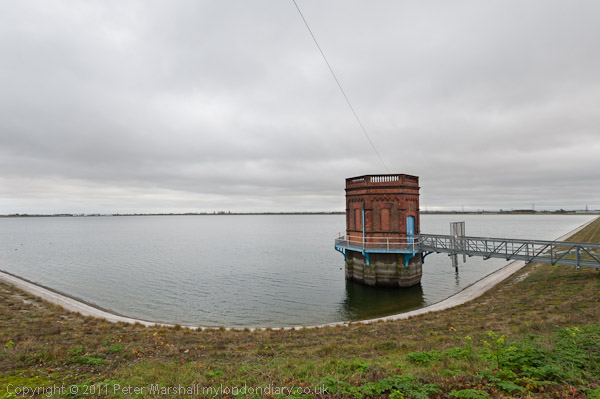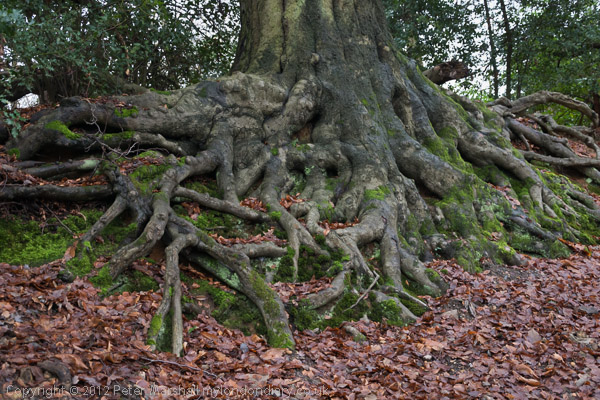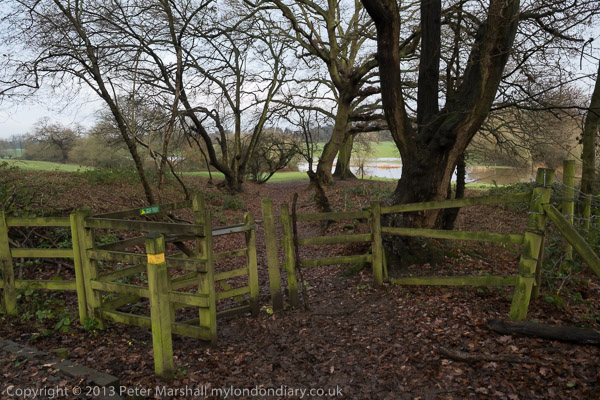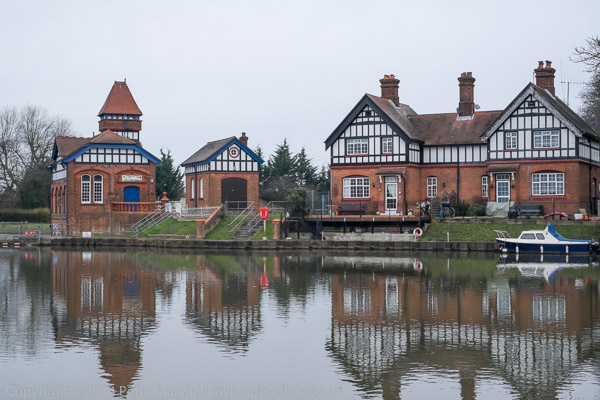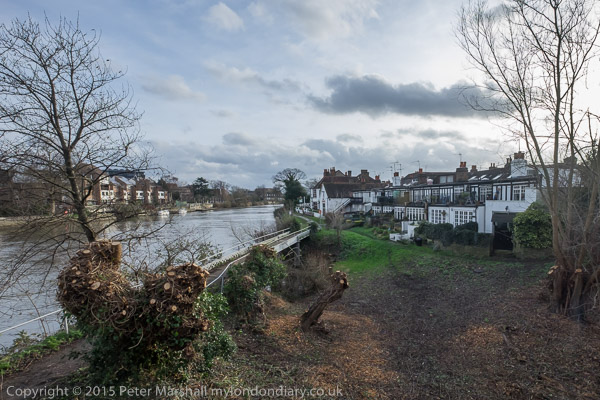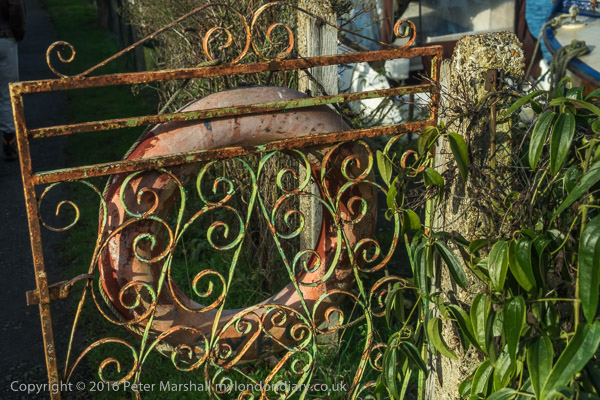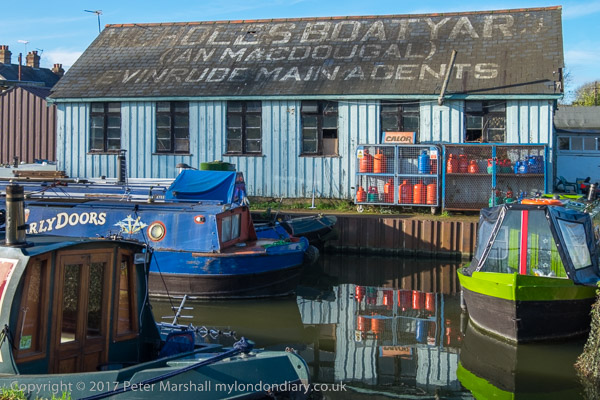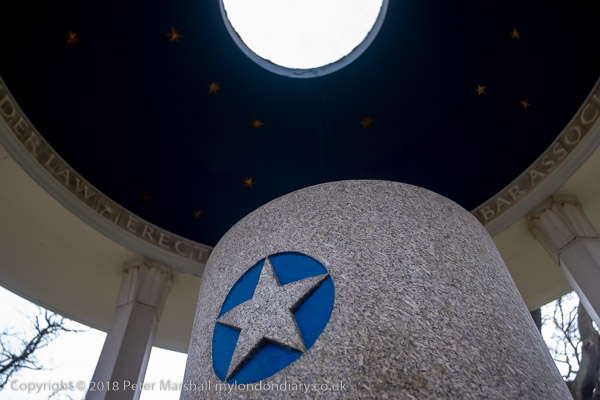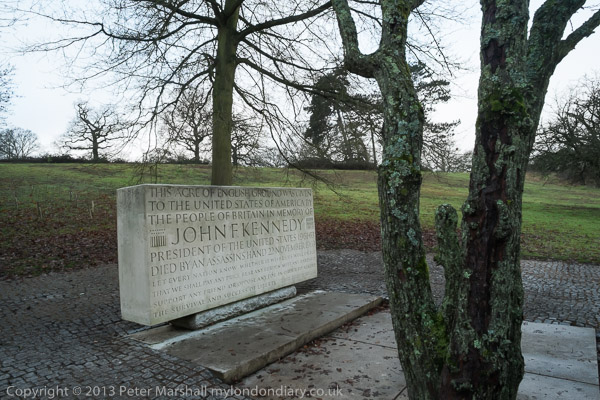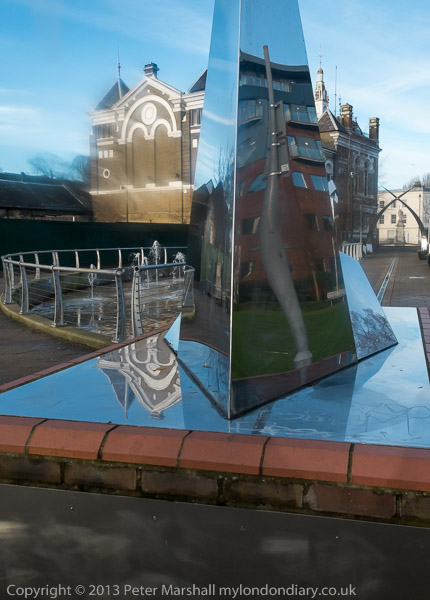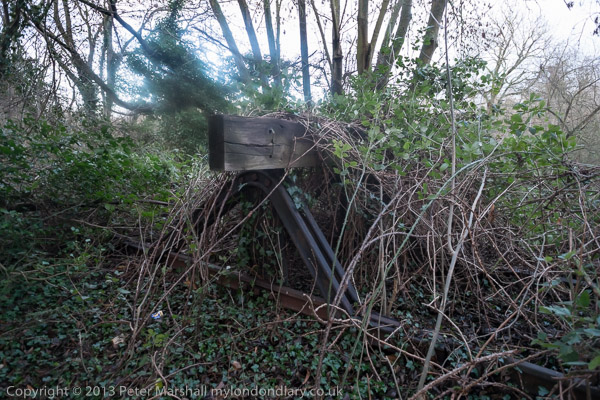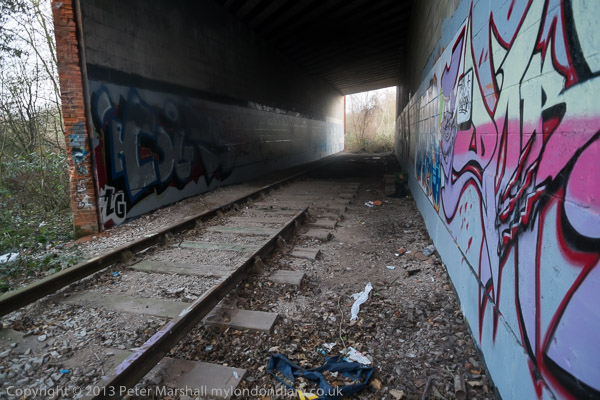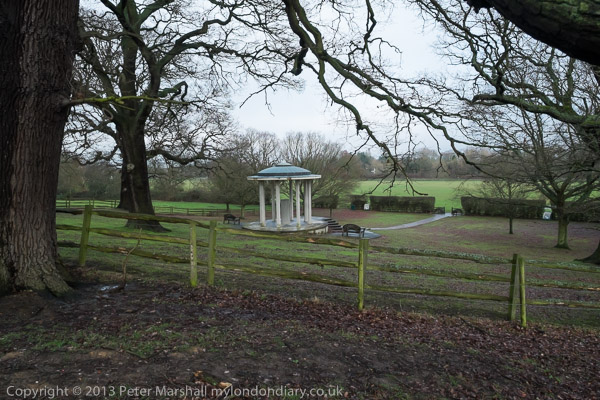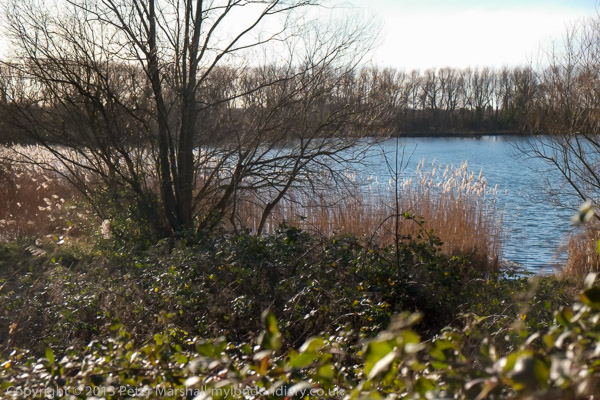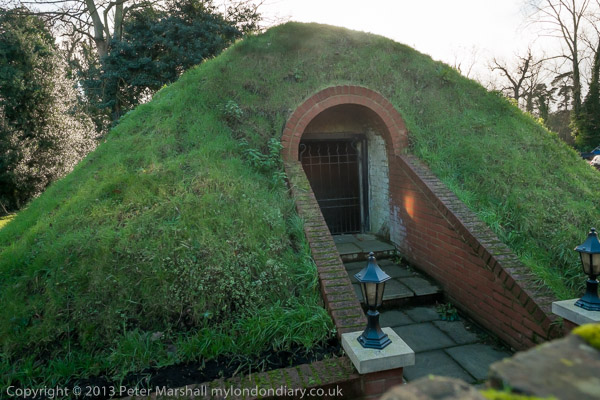Swan Upping on the Thames: On Monday July 17 2006 I again photographed the annual Swan Upping which takes place on the River Thames over five days, in the third week of July starting on Monday at Sunbury Dock and ending on the Friday of that week at Abingdon Bridge. Like many who live close to the river – a five minute walk for me – I’d heard about this for many years but is was only in 2001 that I first saw and photographed the event – before then I had always been teaching during that week.
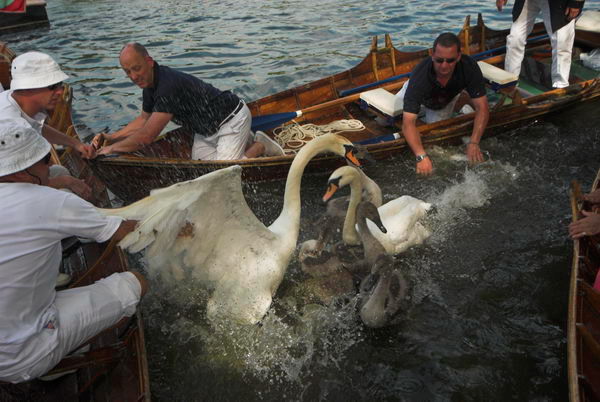
It is a ceremony that began in the twelfth century where a part of their huge grab of the country the Norman invaders claimed ownership of mute swans on open water as well as all the land. Later they granted some rights over the swans to others including London Livery Companies the Worshipful Company of Vintners and the Worshipful Company of Dyers, who now share the rights to swans on the Thames equally with King Charles III.
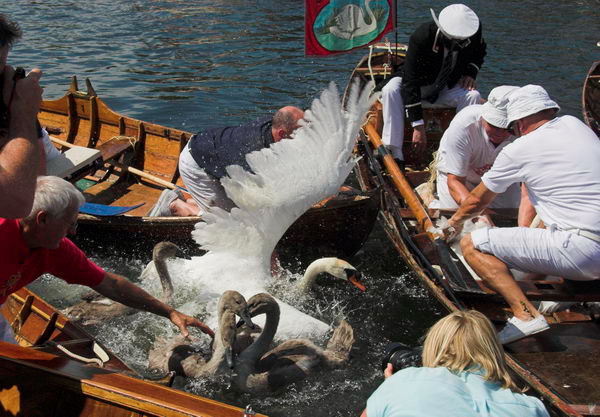
You can find pictures and text from a number of years on My London Diary, up to 2013, when I had photographed it ten times and I then decided I was simply repeating myself. I might go again, perhaps just to watch the spectacle but not to try and cover it in any depth.
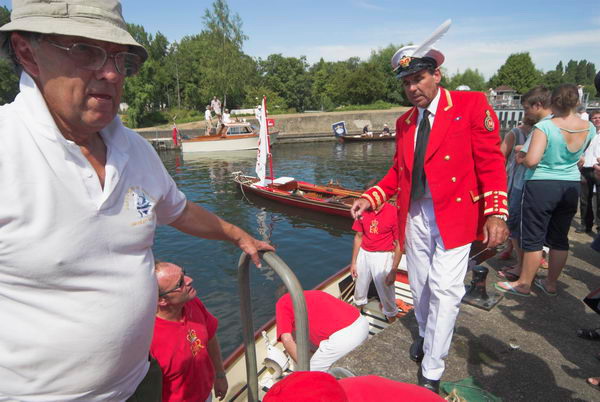
Some years I wrote at some length about the history and what actually takes place, but here I’ll post my first post about the event in 2001 and the post I made in 2006, the year in which all pictures here were taken.
2001
Swan upping is an annual event, counting swans along the Thames from Sunbury to Abingdon takes a week. The Crown decided it was a good thing to claim the swans around the 12th century, so they could gorge themselves on them at banquets, [later] they let some of their rich mates in the city have a share, but protected them from the people by severe penalties.
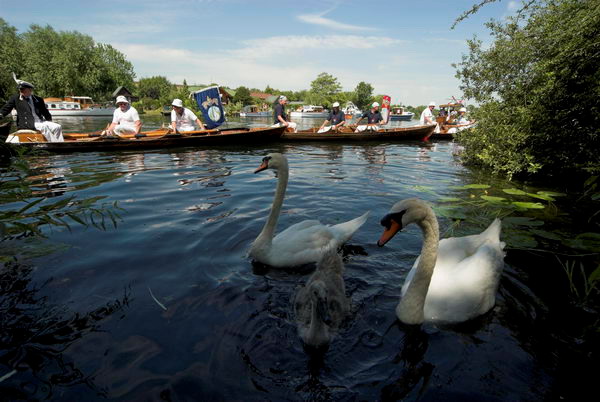
Swans are seldom eaten now, but upping continues to divide the Thames birds between the Crown, the Dyers and the Vintners.
2006
I’ve said rather a lot about swan upping in some previous years. It’s a fascinating and colourful event, which keeps a record of swans on the River Thames, as well as giving them a useful health check. The swans are handled very carefully and care is taken to avoid undue distress (though some of the press present this year could have been rather more careful.)

Swans are no longer normally eaten, but are admired for their decorative effect and looked after. Although anglers are now rather more responsible than in the past, the birds examined still often have signs of damage from discarded hooks and line. Many cygnets die in the first few months before the uppers come around, either from predators or other hazards.

I still feel an excitement watching the skill of the uppers as they surround a family of swans, gradually closing in on them, avoiding gaps and then grabbing them out of the water.

Great care is also taken when releasing the family back into the river, and usually only a few seconds later they are swimming serenely as ever.

One of the smaller mysteries to me is how there are so many swans on the river, but so few mating pairs – and many of these with very small broods. Of course there are many other lakes and rivers around, and swans can and do move around, although many of the adults in these pictures were ringed as cygnets in more or less the same locations.

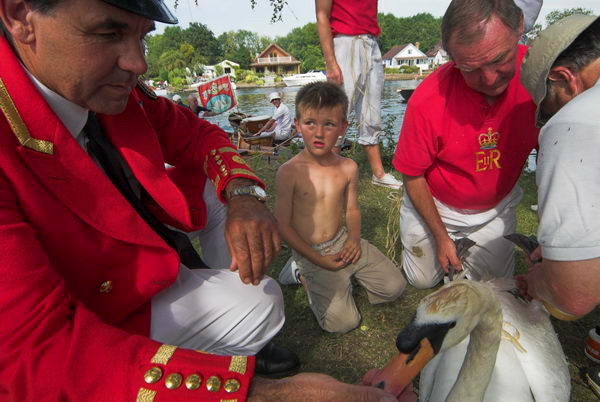
In 2006 I left the uppers at Runnemede, but in some years I went with them to Windsor where they stand to drink a Royal Toast in Romney Lock and then, on the way to the Eton Boathouses at Windsor, the Dyers and Vintners salute the Royal Uppers by standing in their boats with oars upraised.
More pictures from 2006 on My London Diary.
Flickr – Facebook – My London Diary – Hull Photos – Lea Valley – Paris
London’s Industrial Heritage – London Photos
All photographs on this page are copyright © Peter Marshall.
Contact me to buy prints or licence to reproduce.
